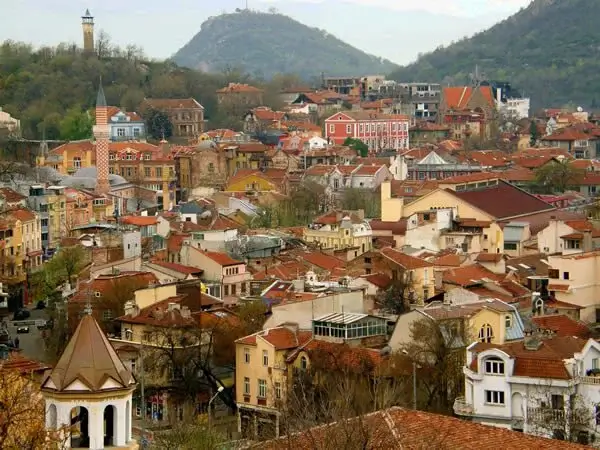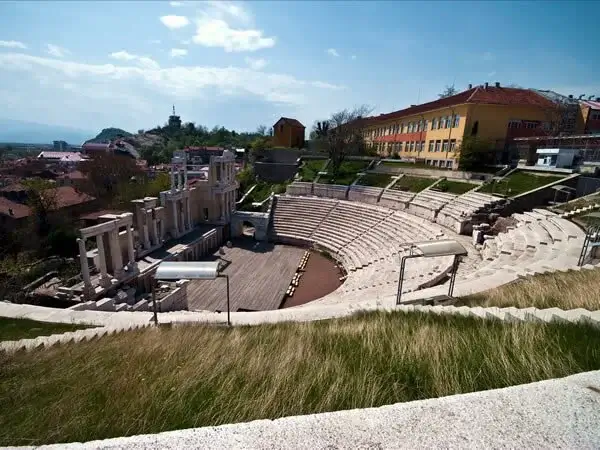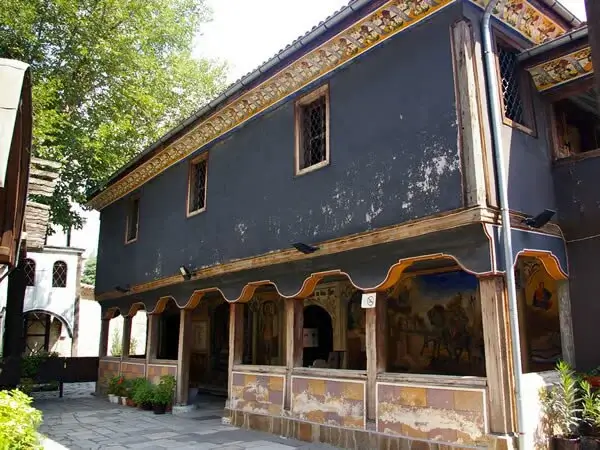The city of Plovdiv is located on the banks of the Maritsa River in central Bulgaria, nestled in a plain between the Rhodope Mountains and the Balkan Mountains. With 375,000 inhabitants, it is the second largest city in Bulgaria after Sofia.
Since ancient times the place has been a crossroads for different civilisations and over the centuries it has been inhabited by different peoples who have left their influence and heritage, in fact, it is known that the enclave has been inhabited for 6000 years, which makes it the most populated place in the world. Europe’s oldest city, even older than Athens or Rome.
Visit Plovdiv
With its six hills Plovidv is a picturesque town with numerous parks, gardens, museums, archaeological monuments and a wealth of culture.
When visiting the town, the first thing that stands out is the architectural style in the old town, which is a good example of the Bulgarian Renaissance style, a period between the 18th and 19th centuries.
Today, many of the houses in this part of the city have been converted into museums.
The legacy of the Roman Empire in Plovdiv is evident in the city’s most representative and well-known monument, the Roman Theatre. Built in the 2nd century during the reign of Emperor Trajan, it has been recently restored and is still used for some performances. Other monuments from Roman times include the Ancient Stadium and the remains of the aqueduct.
Plovdiv has a large number of temples and religious buildings of interest. The Church of St. Constantine and St. Helena, the Church of St. Marina, the Church of St. Nedelya, the Church of St. Petka and the Church of the Holy Mother of God, all examples of the Orthodox architectural style.
Two mosques built during the Ottoman period are also preserved, one of which, the Djumaya Mosque, is the oldest mosque in Europe (excluding the mosques in Spain).
Some of the museums in Plovdiv are worth a visit.
The Ethnographic Museum is one of them and probably the most popular in the city. It is housed in a beautiful house built in 1847 and which belonged to a former merchant. The building is an example of mid-19th century Bulgarian Baroque, built in wood and richly decorated with floral motifs on the exterior and interior. It has a large collection of objects such as farming tools, fabrics, furniture, musical instruments, photographs, etc.
How to get from Sofia to Plovdiv
- Bus: There is an hourly bus to Plovdiv from Sofia Central Bus Station. The journey takes about two hours and costs between 13 and 15 Leva (about €7).
- By car: if you take the A1 highway, the trip takes about an hour and a half. By conventional road in about two and a half hours.
- Train: the trip takes between two (fast trains) and three hours (ordinary trains).
- Plane: flight search engine to Plovdiv.




